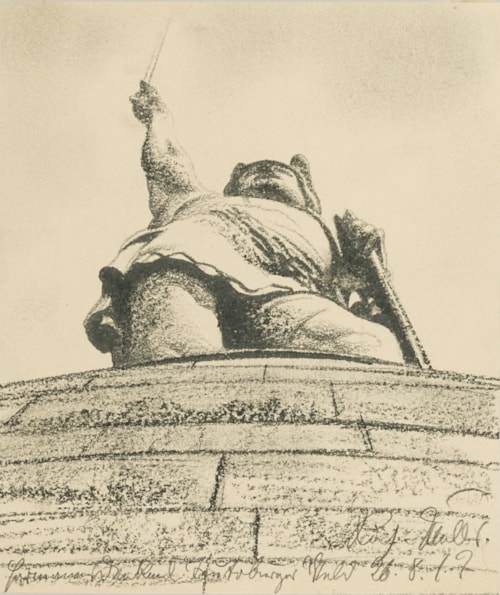
Richard MULLER
Tschirnitz 1874 - Dresden 1954
Biography
A superbly gifted draughtsman and printmaker, Richard Müller was born in the Bohemian town of Tschirnitz (today Cernovice in the Czech Republic). The son of a weaver, he manifested considerable artistic talent as a child, and by fourteen had enrolled in the school of the Royal Saxon porcelain factory at Meissen. Two years later, at the age of sixteen, he entered the Akademie in Dresden as one of the youngest students ever admitted to the school. Müller studied in Dresden between 1890 and 1893, and his earliest drawings – landscapes and studies of animals, for the most part – already reflect the lifelong stylistic inspiration of his older contemporary, Adolph Menzel. Another profound influence on the young artist was the printmaker Max Klinger, whose work he encountered in Leipzig, and who encouraged him to take up etching. In 1897 Müller won the Rome prize at the Prussian Academy of Arts, and the following year the first portfolio of his graphic work was published. For over thirty years, beginning in 1903, he served as a professor at the Dresden Akademie, where his students included George Grosz and Otto Dix. In 1921 an exhibition of Müller’s work was held in Dresden, and the same year the first monograph dedicated to his oeuvre was published. After 1924, he largely abandoned printmaking and concentrated on drawings and paintings whose subjects were often fantastical, sometimes quite macabre and occasionally erotic. Müller was appointed Director of the Akademie in Dresden in 1933, but was forced to resign two years later, under the Nazi regime, for ‘subversive tendencies’ in his art. After the war, he was refused membership in the East German artist’s union, and spent the rest of his life struggling for commissions and recognition. The artist’s son Adrian Lukas Müller was active as an art dealer, scholar and publisher, and sold some of his father’s work.


